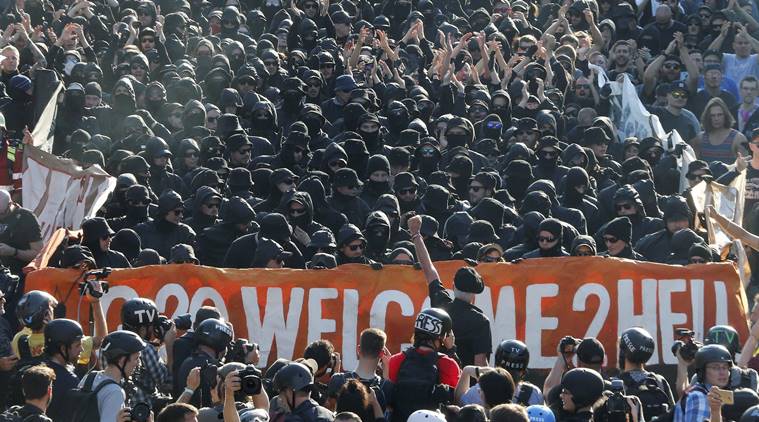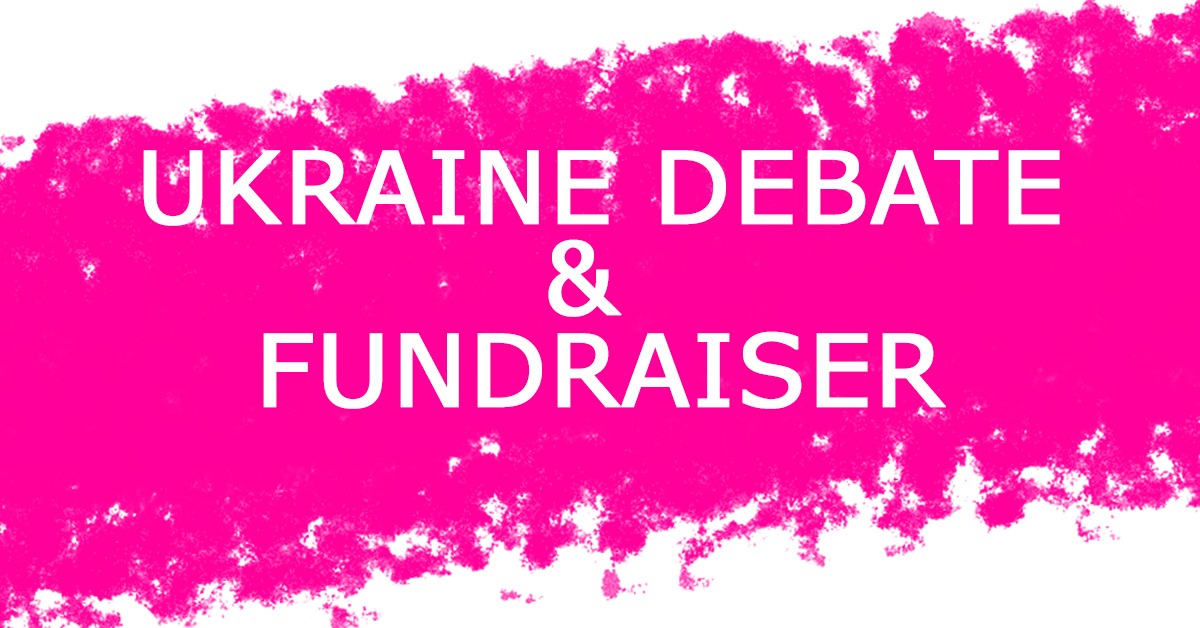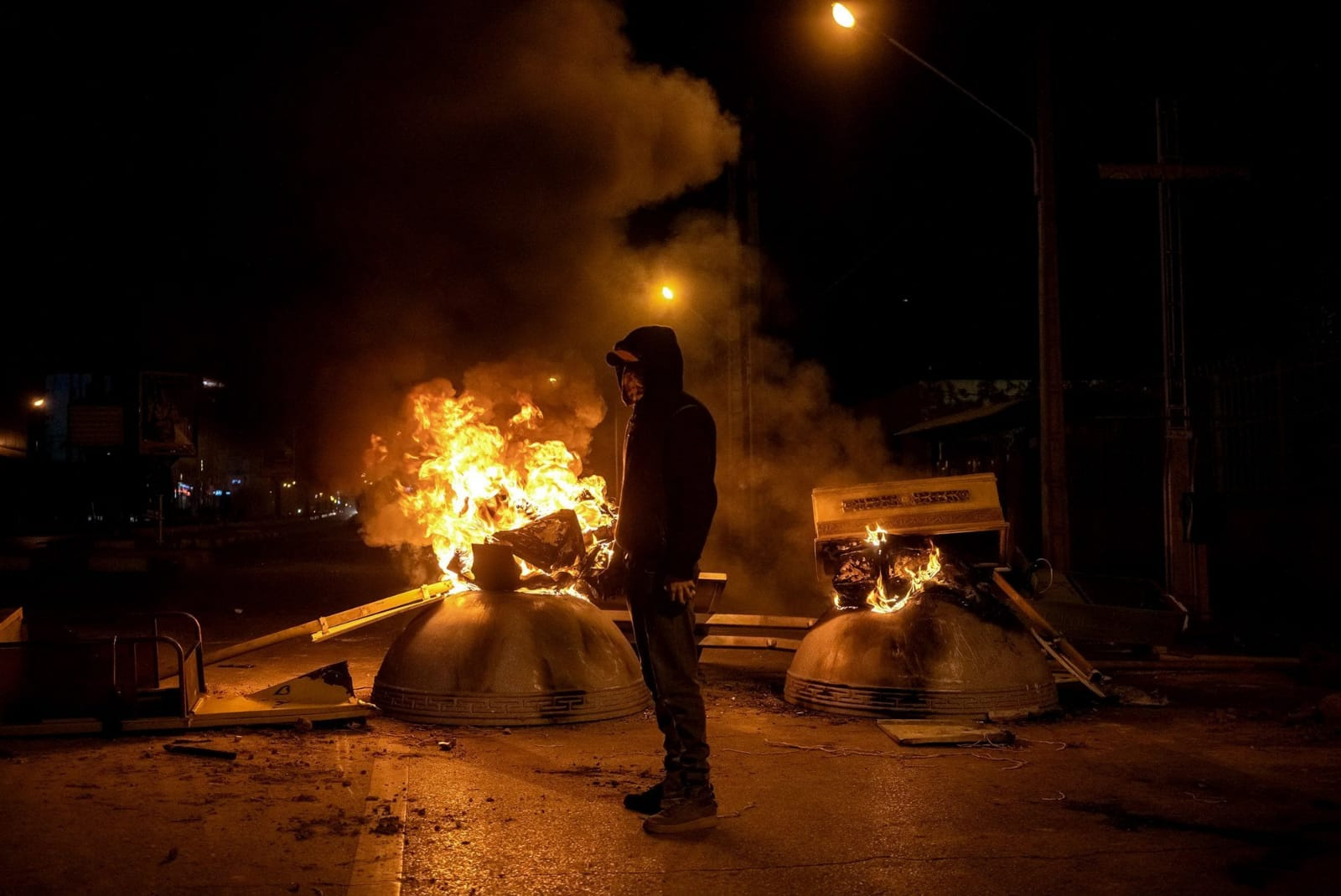One year after the anti-G20 mobilisations in Hamburg, Anna Clara Basilicò from globalproject.info has interviewed the social movement scholars Peter Ullrich – researcher at the Technische Universität Berlin – and Donatella Della Porta – professor at the Scuola Normale Superiore of Florence. We have decided to re-publish this interview in light of the recent wave of repression that hit several comrades who took part in the protest.
Question: You are both part of the research project “Mapping #NoG20”, carried out by the Institut für Protest und Bewegungsforschung of Berlin. What is the aim of this institute and what are your roles in it?
Peter Ullrich: The IPB is a network institute without a “physical location”. It aims at filling the gap in German academia concerning research on social movements and protests through collaborative research projects, several research committees, a working paper series and conferences. These activities connect scholars from all over Germany and abroad (see for instance our activities with Donatella, but also the collaboration with Swiss, Austrian and French researchers). Last year, for example, the Institute organized an international conference in Bochum on cross-movement organization, but nonetheless we try to focus on the German context, namely in order to fill the gap mentioned before. Regarding my position, I am fellow of the institute, but actually work as Co-head of the research area “Social Movements, Technology, Conflicts” at Technische Universität Berlin, currently, together with Simon Teune and Stefan Malthanes, as one of the principal investigators of the project “Mapping #NoG20. Documentation and analysis of the violent escalation during the protests against the G20 summit in Hamburg 2017”.
Donatella Della Porta: Along with other colleagues, I was invited as fellow of the scientific committee. This initiative was partly created from the bottom up with the aim – among the others – of providing a political response both to the Hamburg events and to the position taken by mainstream press, who endorsed the official version provided by government bodies. It was hardly possible to retrace, in the aftermath of the summit, a report of the facts as they actually went. The scientific analysis of those events and of provisions that followed is inscribed into a wider comparative frame: on the one hand, the history of counter-summits in German territory, on the other hand the connection with law and order forces and measures implemented from Seattle (1999) on. The main focus remains nonetheless the escalation of violence that characterized the interaction between protesters and police. As Peter said, the outcome of this research will be provided in the first place in German, but an English translation is in planning too. In Germany, the four days of Hamburg follow the path of other protests – among which, of course, Blockupy – but since the G20 is a global meeting, its prerogatives cannot be put down to a “local” context. In fact, researchers collected several testimonies from activists from all over Europe.
Q: The “Sonderkommission Schwarzer Block”, a special division of Hamburg police entrusted with the investigation, in the aftermath of the protests implemented an online database with pictures and videos. The stated aim was to obtain from the population useful information to identify the rioters. How did the public opinion react? Did the press play an important role in those dynamics?
P.U.: Generally, the G20 events led to a strong polarization of the political debate. Actually, it was evident since those days in July 2017. On the one hand protesters fought for the right to demonstrate and to get closer to the G20 summit spots, and on the other hand the law and order coalition stood by the police measures. Also press coverage was polarized heavily.
When the police started this online form, liberal and left-wing media objected, since several people that appear in those images were not formally accused. In addition, the charges against the suspects vary significantly, and some of them concern minor offences. Nonetheless, they were all sensationalised by the media. This is reminiscent of the search for RAF terror suspects. Much of that seems out of proportion.
On the other hand, many people uploaded pictures and videos on social networks, on Youtube or on websites, so the police had the chance to collect thousands of images and videos for its investigations from voluntary and “involuntary” providers.
This campaign had some extreme effects: German tabloids for example supported the police in a way and put photos of the accused on the front page. The Bild-Zeitung published the photograph of a protester who in the end was established to be not even eighteen years old and who was portrayed as a “Krawall-Barbie” (i.e. “riot Barbie”). This was a hugely sensationalist media coverage, in this case also with a strong sexist connotation.
Some autonomous activists replied to the campaign in their own way and published a mugshot poster with pictures of police officers and politicians they declared guilty for police violence. As predictable, such initiative provoked many polemical reactions.
Q: In many cases, the divulged images do not allow for an actual identification, rather showing some of the most violent episodes. Is it possible to read such a device as a strategy of functional criminalization of dissent? As, in fact, an attempt to elicit specific reactions among the public? Has this measure already been used?
D.D.P.: Yes, such a device has indeed its place within tendencies already existing in public order policing. I can mention two examples above all: one of the contexts subject to similar treatments is the stadium. Pictures collected during sporting events are usually spread with the aim of intimidating hooligans and of gaining public endorsement for the measures taken to monitor violence. Another effort to engage the civil population is made regarding the so-called “radicalization”. By focusing on Islamic fundamentalism in particular, the process of radicalization turns out to proceed on a standard path, characterized by specific phases. One of these, typical of the early stage, is the intensification of religious practice. In many countries, one of the strategies adopted to address radicalization is getting the community involved in surveillance, by delegating part of the monitoring activity to teachers, doctors, and so on. From my point of view, the engagement of civilians – to whom a new level of responsibility is assigned – to legitimize law enforcement responds to two purposes: on the one hand the marginalisation of individuals depicted as responsible of acts of violence; on the other hand – in more general terms – the empowerment and the participation of the “public”, of citizens, in the repression of specific episodes.
Regarding the Hamburg frame, such strategy has been applied also to non-violent organizations. By equally highlighting, pointing out or ascribing various degrees of guilt to those who are usually considered as “good demonstrators”, a sort of outsourcing of the commitment was carried out. The public order’s subversion or maintenance was then put down also to organizers of peaceful protesters.
I consider such gimmicks as scarcely efficient for police forces. They arouse a lot of noise, but from a utilitarian point of view, they do not lead to a significant increase of pertinent information.
Q: Peter, as you said, lots of pictures, videos and news posted online during the NoG20 protests have been used by police as evidence or support to the investigations. Also, the online platform linksunten.indymedia.org was shut down. Did digital surveillance have a specific weight during – and after – G20?
P.U.: I would say it has, even if it is not a new trend: this is the result of a constant development we have been witnessing for years. The use of digital surveillance is just one of the features of modern surveillance societies. It is one of the pillars of militarized protest policing, which involves a wider use of technology, more protective gear, the introduction of military weapons and devices and the fortification of summit spaces.
In Hamburg, the police wanted to show its full potential. Law and order forces even applied new highly advanced software allowing them to see simultaneously on a big screen the map of the city with an overview of everything that was going on. That includes all their forces, but also the geolocalization of Twitter discourse etc. The secret service (Verfassungsschutz) also played an important role in the preparation phase of the G20 protests. Their information was crucial for the police planning of activities. However, their sources always remain obscure: a problem for democratic control and legitimation.
An important feature of the G20 policing was their proactive use of social media, not just as a field of observation, but as a field of action. The police were not dependent on the press anymore to get their view published. They directly posted on Facebook and Twitter and thus reached a large audience. In fact, they spread news that later turned out to be false or based on no evidence: I am referring, for instance, to the news about protesters using Molotov cocktails or being on roofs armed with huge stones, which never could be secured as evidence.
Q: Along with digital surveillance and high-tech devices, do you think Hamburg was a turning point in preventive strategies? Does police behaviour belong to an already set orientation?
P.U.: I would not overestimate the significance of Hamburg as a turning-point. Hamburg was more a symbolic agglomeration of several general tendencies with some local specificities. As I have already said quite often, if the summit would have happened in another city, the protest would have developed differently. So much of what we have seen depends on the specific context of the city. In Hamburg, the history of harsh conflicts between leftist movements and police is of relevance.
The dominant police approach plays an important role in the escalation. In Hamburg police relied on a form of the strategic incapacitation approach of protest policing. In this regard, Hamburg is a specific public order environment in the German context. Their legalistic policing style relies on surveillance, the use of as much technology as possible and a “low intervention threshold” (“niedrige Eingreifschwelle”), i.e.: if illegal activity is recorded, sometimes even concerning minor matters, the police intervenes.
Their approach materialized in the form of a show of force: there were more than 31,000 officers, 48 water cannons, airplanes, helicopters, horses, dogs, boats and even a newly supplied tank. Police brought everything at their disposal to Hamburg. With all these arms and armours, we realize a general tendency in the development of protest policing: the militarization of the police. Two tendencies are relevant here: first, police are deeply focused on terrorism, on their fear of becoming targets. Therefore, they want “equal” weaponry, and this is why they deploy highly protective gear, quasi-military armament and so on. Secondly, we have seen a strong tendency to develop a prevention approach, which is a victim of its own success and turns out to foster forms of repression.
For instance, it is customary in Germany to have radical demonstrations surrounded by lines of police on all sides, or to be checked at your arrival at the starting point of a demonstration. The police gear resembles a RoboCop style. In Hamburg many officers were even wearing balaclavas, so that also the last part of skin that they exposed was hidden. These practices have preventive aspects: they try to minimize the conflict potential, maximize control, avoid all kinds of risks from the very beginning to prevent violence. But this sheer amount of measures – made even worse by the developing military style – leads to more or less repressive effects. The demonstration looks dangerous, people shy away. So, by radicalizing their preventive approach, they end up with repressive effects. This is a factor that may not be intended from the beginning, but that turned out to be crucial as part of this militarization process of protest policing.
Q: Regarding the Italian context, prevention and emergency-style management seem to have been the focus of legislation in recent years, if we consider for instance DASPO (i.e. sports event access ban) or the deferred arrest (DA). The prerogatives of such provisions lay on very different bases from traditional penal law. How does this new approach affect protest policing?
D.D.P.: Interventions as DASPO, DA or others apply to ever-widening situations. One of their features is the very limited judicial control: those tools rely on a high level of police discretion. What emerged from the Italian context – whose laws in this field date back to fascism – is the increasingly intensive recourse to such measures also in protest policing, whereby activists are forced to a limited freedom of movement both through access or leaving bans. Those provisions are authoritarian and restrictive, since they deal both with freedom of movement and spatial control.
I think the notion of “space” is an interesting matter, since, according to traditional penal law, the target of a sentence is the perpetrator of the crime, which is identified through inquiries. Nowadays, the concept of repression transformed, twisted and enlarged its field of application, so that it includes entire categories of people. According to this trend, not only who, as a matter of fact, commits a felony, but also who, for specific prerogatives – ideologies, origins, faith, age… – is considered as potentially able to perpetrate a crime can be prosecuted. Nonetheless, the breach does not subsist, so that the intervention of the judiciary is not required nor given: the police is in charge whether intervening or not and it can act by reducing those groups’ freedom of movement.
Such measure, significant on an international scale but highly represented also during Hamburg G20, arises for instance by claiming the entrance to some areas (i.e. “red zones”) as a crime in itself. It Italy, this method is well evident in the matter of the repression of NoTAV and NoMUOS movements, committees against incinerators, and so on: given territories or locations may be stated as “military areas” so that the mere fact of protesting there is liable to penalties. These forms of criminalization thus concentrate specifically on spaces and categories of persons upon which these measures are addressed. It is important to remark that such expedients are by no means intended to identify or punish a felony, but rather – in a kind of preventive effort – they steer towards expelling potentially risky groups from in plain view areas (red zones, dig or trilling sites…) by forcing those assemblies to the edge of towns, in non-relevant places. Livio Pepino, a former magistrate engaged against repression, described this trend as an elaboration of “enemy criminal law” aiming, as I said, not at combating a crime, but at containing precise units considered at risk.
The spatial dimension – and the related management – is affected by the diffusion of semi-private places or by the privatization of public spaces, such as airports (speaking of which, see the relevance of such disposition within Blockupy protests), wherein business companies are in charge and may resort to private security forces. So, if in the past the attribution of public order maintenance to the State has been part of the democratization process of police, the new trends highlight the increase of privatizations and outsourcing of these authorities. I am referring, for instance, to colleges in the USA, or to factories, where police appeared already in the Sixties.
Another measure that works alongside these prevention and control strategies, equally applied to political protests and forms of radicalization, is the introduction of heavy fines also for people who took part in or organized demonstrations during which violations were committed. In the US, for instance, there are researchers focusing on injunctions approved by local pro-Trump administrations that aim at repressing anti-Trump protests by imputing the status of guilty part not only to those who, during an escalation of violence, caused damage, but also to the organizers, who risk the seizure of properties and real estates.
Q: One last question. After nearly a year, several activists were arrested across Europe. Why did it take so long for the police to react? How do they cooperate?
P.U.: There are treaties between countries that oblige national police forces to support each other. In protest policing there are many forms of cooperation, for instance, the European police forces have had for several years a research project (Godiac) with a focus on summit protests. They studied protest strategies, counter-tactics and so on. And there are databases, so there is a dense cooperation. But investigations need their time, even if you have a team of 170 officers, automated face-recognition software etc.
This brings me to another aspect: we have to be clear about the fact of complexity in Hamburg.
We saw a spiral of violence with a range of actors taking part. For instance, during the “Welcome to Hell” demonstration, when police attacked the “black bloc”, a lot of people who were just gathering around to see what was going on stepped into the scene and started throwing stuff at the police in anger. There were also frictions among protesters. When some anarchists tried to start fires in shops with flats above them, other autonomous militants intervened. It was then a complex situation, wherein it was not easily possible to determine who did what, who did not and why. This makes a thorough process of reflection necessary, in several spectra, organizations etc. Mainstream political discourse easily ascribes all that happened to strategic plans and intentions, but this ignores the process of escalation that unfolded over one week, starting with the hindering of protest camps and resulting in the riot in the end.





